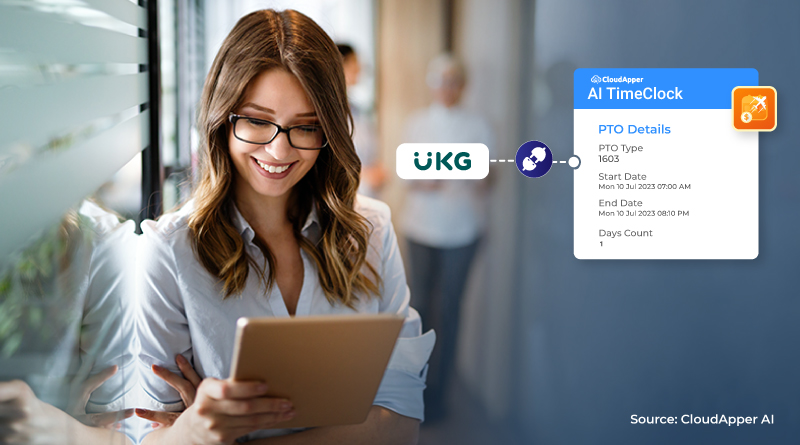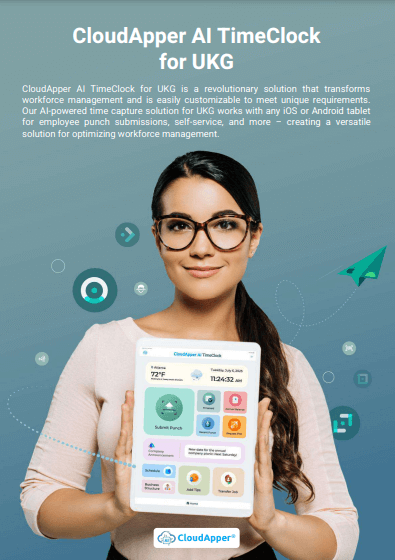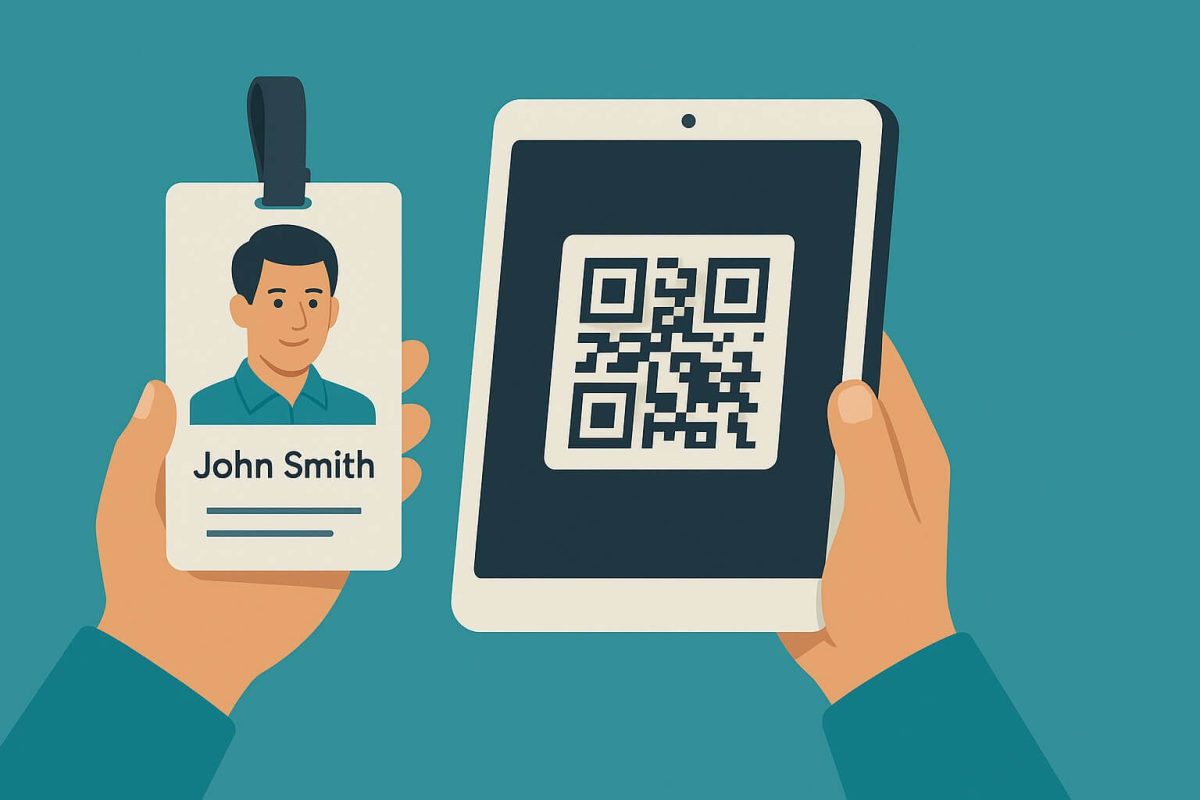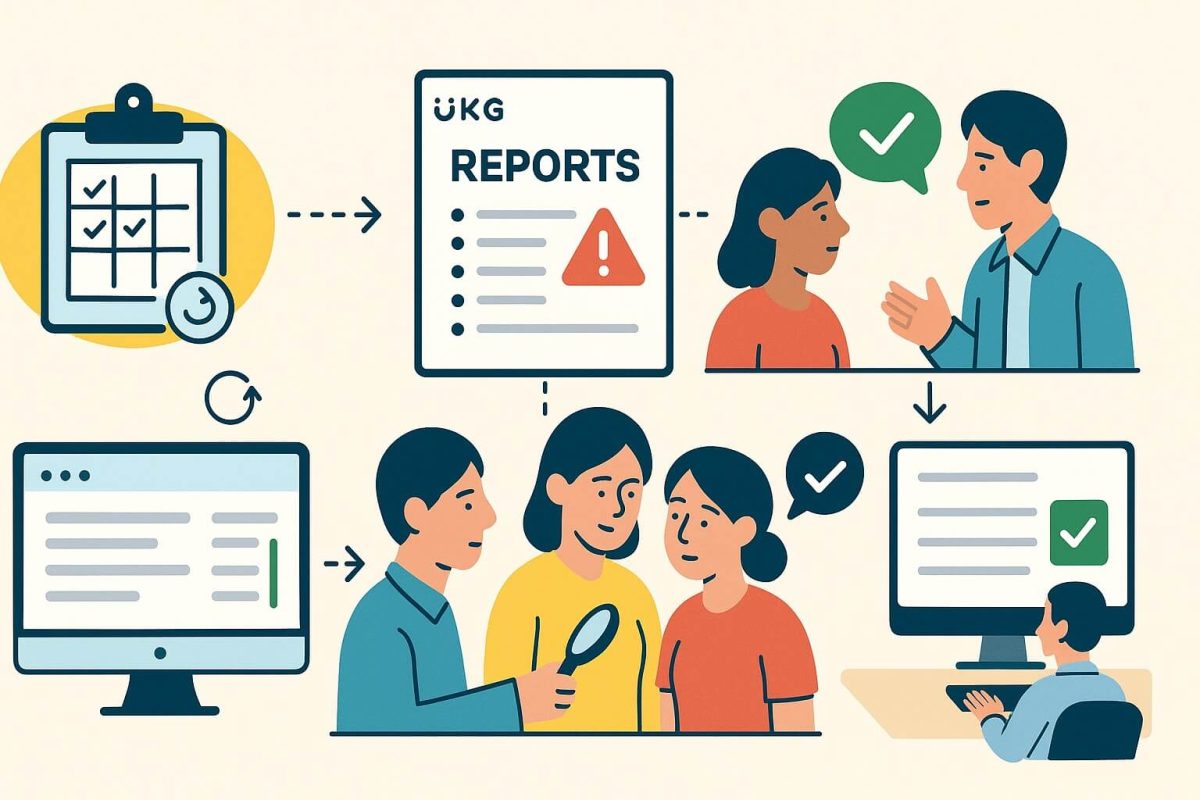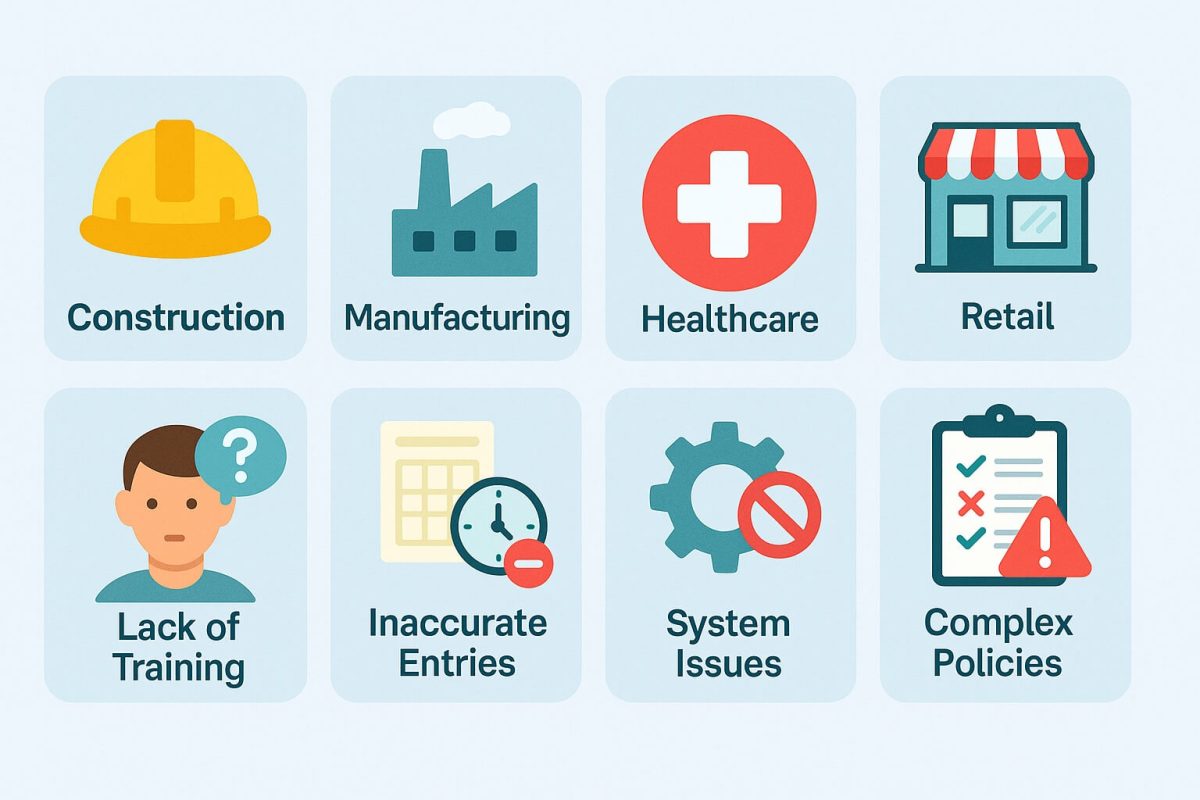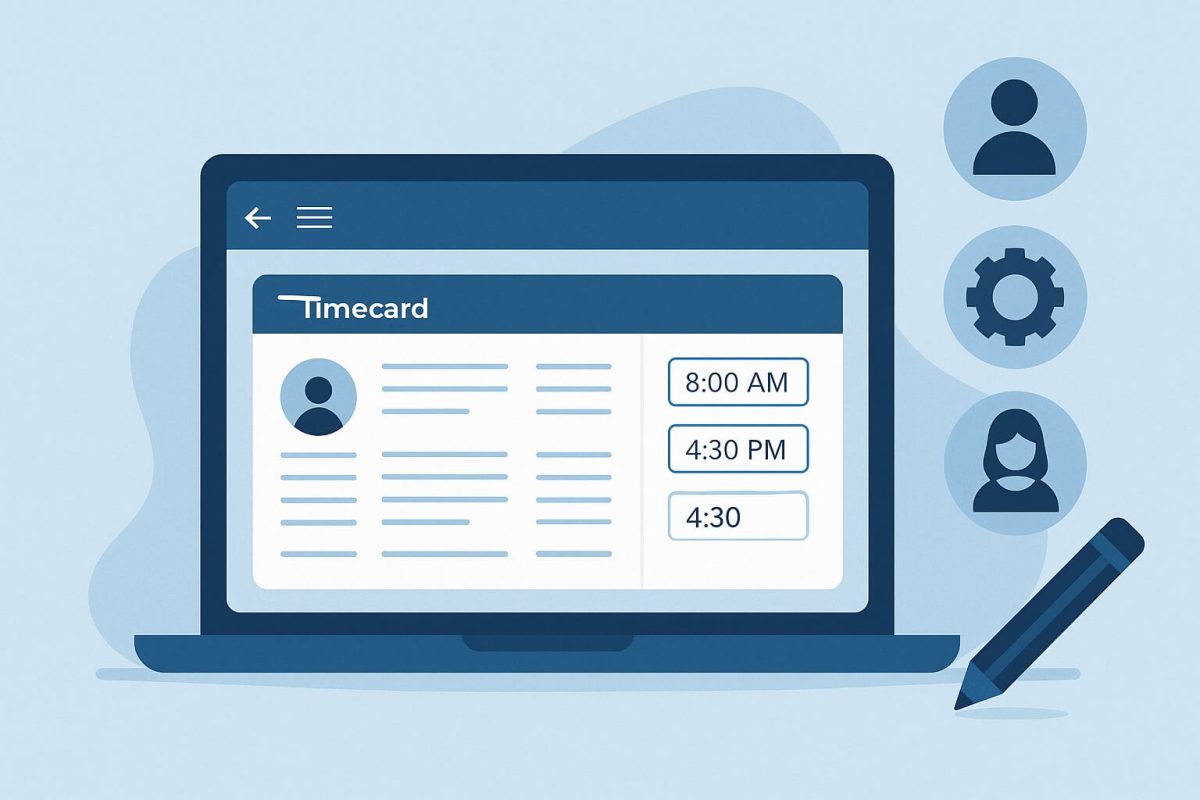Employee burnout from underutilized PTO leads to stress and reduced productivity. CloudApper AI TimeClock integrates with UKG to analyze overtime patterns, send automated reminders, conduct sentiment surveys, and use predictive scheduling—cutting burnout risks by up to 50% and improving work-life balance, as proven in manufacturing success stories.
Table of Contents
Underutilization of paid time off (PTO) intensifies the problem of employee burnout. Increasing stress and burnout are some of the negative outcomes associated with not taking PTO, according to recent studies (e.g., HR Morning). Companies with anti-vacation policies, high rates of job instability, or even just plain old forgetfulness make the situation worse. This is why businesses want cutting-edge tech that reminds workers to take breaks so they can keep a good work-life balance. One innovative approach to these problems is CloudApper AI TimeClock for UKG (Kronos), previously Kronos, which uses artificial intelligence to keep tabs on and analyze data from employees’ time tracking records.
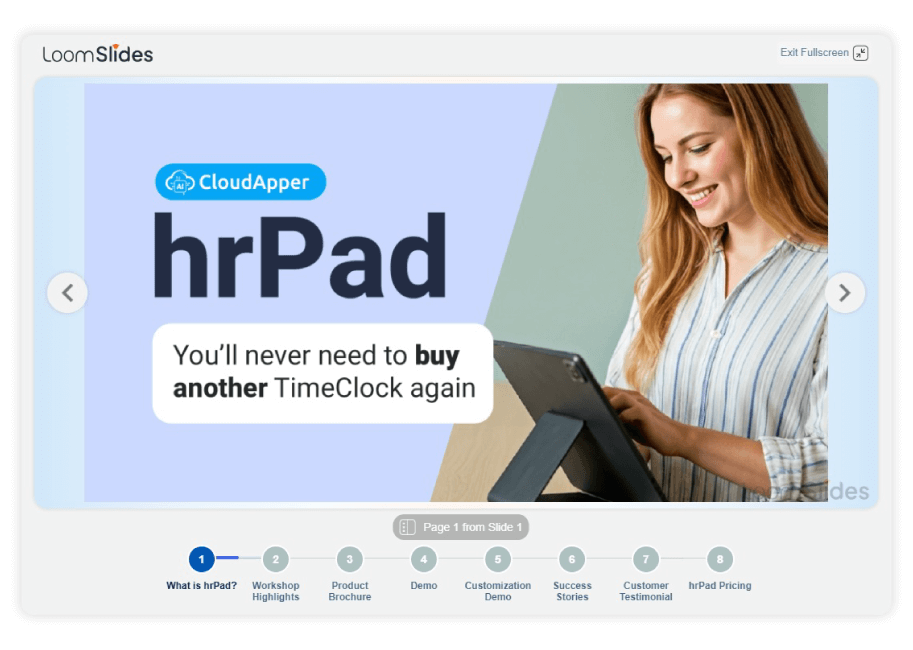
For more information on CloudApper AI TimeClock for UKG visit our page here.
TL;DR
CloudApper AI TimeClock enhances UKG by using AI to monitor time patterns, detect burnout risks (e.g., excessive overtime, skipped breaks), send PTO reminders, gauge employee sentiment via surveys, and enable predictive scheduling—reducing burnout by up to 50%, boosting morale, productivity, and overall well-being.
How Does CloudApper AI TimeClock Optimizes UKG PTO Management?
CloudApper AI TimeClock can analyze trends of tardiness, overtime, absenteeism, and clock-in/clock-out times to detect the risks of burnout. The system can then notify human resources when workers exhibit repeating patterns of excessive overtime or missed breaks. Organizations can prevent burnout by addressing issues early on, keeping staff engaged and productive. In addition to providing a holistic picture of workers’ health, the AI-driven technology sheds light on their mood and exhaustion levels by conducting AI powered surveys during check-in and out. In order to avoid overworking personnel, it is crucial to have this data in order to make adjustments to timetables and workloads.
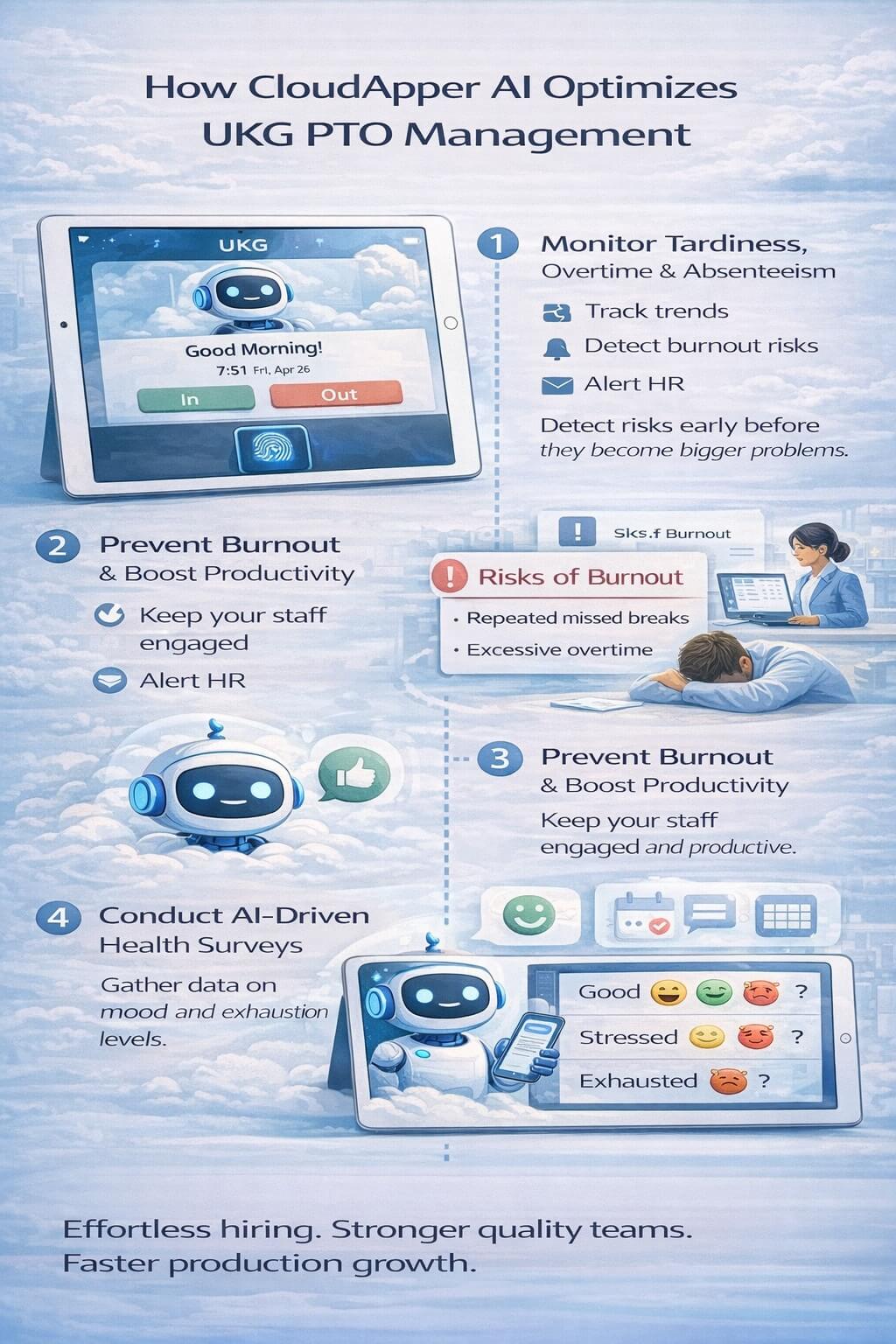
A study by the American Psychological Association found that regular PTO usage can reduce burnout by up to 50%, leading to higher employee satisfaction and productivity.”
Success Story
A leading manufacturing company* recently faced significant challenges with employee burnout due to underutilized paid time off (PTO). Despite offering generous PTO policies, employees hesitated to take time off, fearing they might fall behind on their work, leading to increased stress, absenteeism, and reduced productivity. Implementing CloudApper AI TimeClock integrated with their UKG system allowed the company to monitor and analyze employee time tracking data comprehensively. The system flagged patterns of overtime and skipped breaks, enabling HR to intervene proactively. Automated reminders encouraged employees to take their allotted PTO, significantly improving work-life balance. Within months, the company saw a remarkable decrease in burnout rates and an increase in employee morale and productivity.
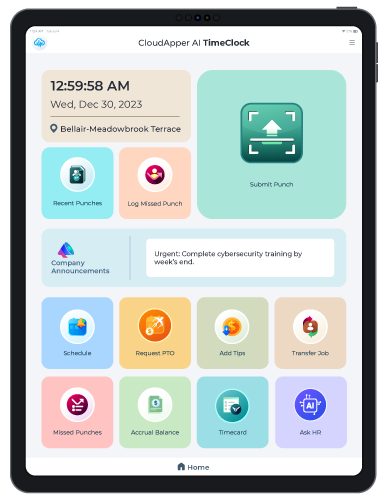
AI TimeClock for UKG
Casino Workforce Management with CloudApper AI TimeClock for UKG
*Disclaimer: Due to privacy reasons, specific customer details are not disclosed.
One of the key benefits of CloudApper AI TimeClock is its seamless integration with UKG (Kronos) systems, creating a unified platform for all time tracking and workforce management needs. This integration ensures that all data is centralized, making it easier to monitor and manage employee well-being. Predictive scheduling based on AI analysis helps organizations detect thresholds where safety incidents and downtime are likely to occur, allowing for better future scheduling. By leveraging AI technology, organizations can prevent burnout, enhance productivity, and improve employee morale. To explore how CloudApper AI TimeClock can help your organization, visit our UKG Time Clock Page or Kronos Time Clock Page and schedule a demo today.
Key Takeaways
- PTO Utilization: Encouraging and monitoring the use of PTO can significantly reduce employee burnout and improve overall well-being.
- AI Monitoring: In order to prevent burnout, HR departments can use AI to examine time monitoring data and spot trends that could indicate impending exhaustion.
- Seamless Integration: By seamlessly integrating with UKG (Kronos) systems, CloudApper AI TimeClock offers a streamlined and effective platform for workforce management.
- Predictive Scheduling: Predictive scheduling, made possible with the use of AI analysis, ensures maximum productivity and morale among workers while avoiding overwork.
- Holistic Well-Being: Better health and work-life balance management are made possible by insights on employee sentiment and weariness provided by AI-powered surveys and extensive data analysis.
FAQ
Q1: How does CloudApper AI TimeClock enhance PTO management with UKG?
A1: CloudApper AI TimeClock integrates with UKG to monitor and analyze employee time tracking data, ensuring that PTO is utilized effectively. The system detects patterns of overtime and skipped breaks, allowing HR to proactively address potential burnout and encourage PTO usage.
Q2: What is predictive scheduling, and how does it help with PTO management?
A2: Predictive scheduling uses AI to analyze employee time tracking data and predict when burnout or safety incidents might occur. This enables organizations to schedule work more effectively, preventing overwork and ensuring employees take their allotted PTO.
Q3: How does AI-driven technology contribute to employee well-being?
A3: AI-driven technology monitors trends in employee behavior, such as excessive overtime or missed breaks, and provides real-time insights into employee sentiment and fatigue. This allows HR to make informed decisions to improve work-life balance and prevent burnout.
Q4: Can CloudApper AI TimeClock be customized to fit specific PTO policies?
A4: Yes, CloudApper AI TimeClock is customizable to fit the unique PTO policies of any organization. It automates reminders and notifications to ensure employees take their entitled time off, contributing to a healthier work environment.
Q5: How does seamless integration with UKG benefit PTO management?
A5: Seamless integration ensures that all time tracking and workforce management data is centralized, making it easier to monitor and manage PTO usage, identify potential burnout, and improve overall employee well-being.





